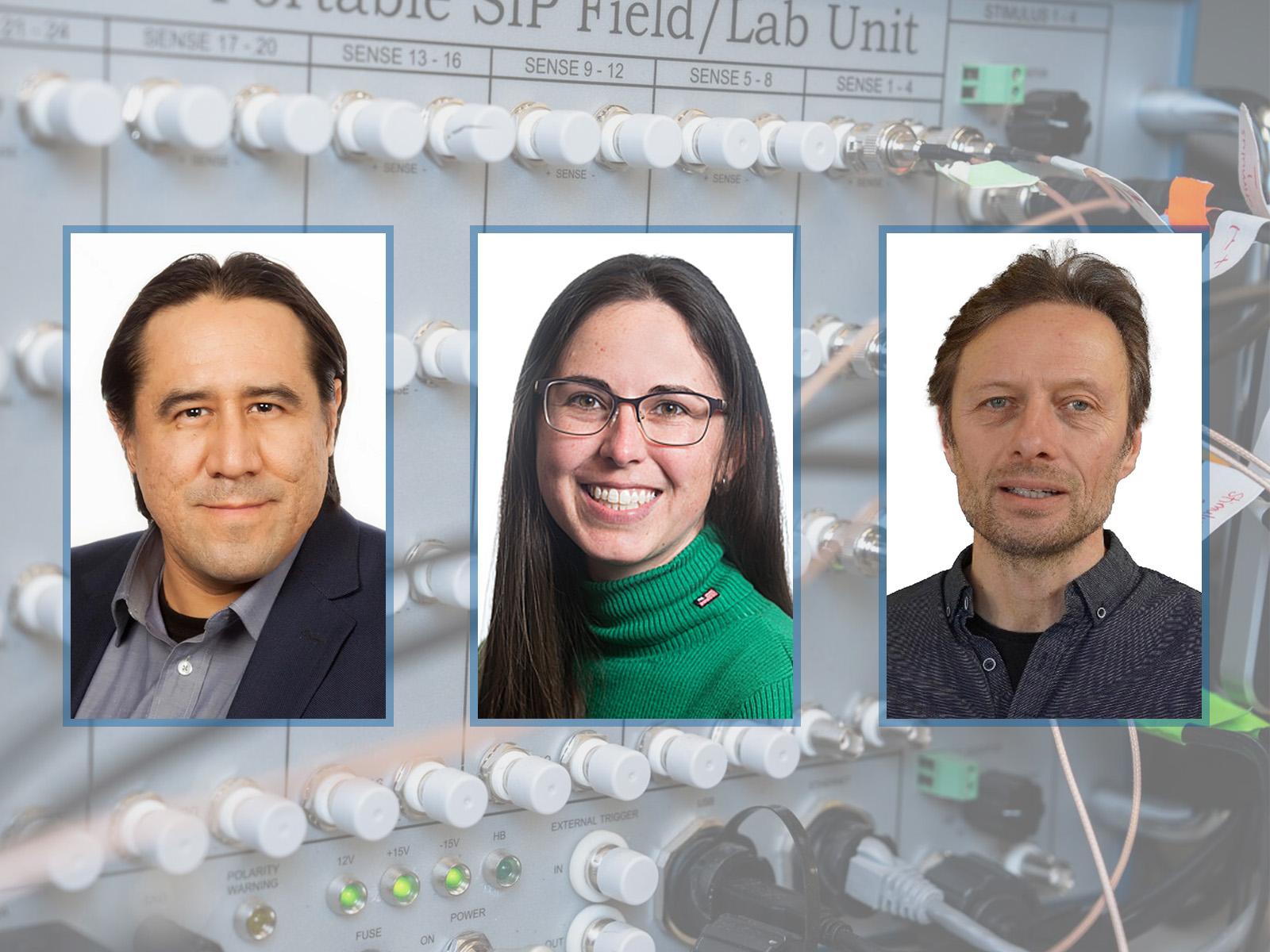RemPlex Seminar: Subsurface Sensing with Spectral Induced Polarization
Learn how spectral induced polarization might be used to enhance the understanding of subsurface processes and improve remediation outcomes at complex sites.

Dr. Adrián Flores-Orozco of TU Wien (left), Dr. Hilary Emerson of Pacific Northwest National Laboratory (center), and Dr. Lee Slater of Rutgers University-Newark (right) are experts in spectral induced polarization for subsurface remediation.
(Composite image by Shannon Colson | Pacific Northwest National Laboratory)
8:00–9:30 a.m. PDT | 11:00 a.m.–12:30 p.m. EDT | 16:00–17:30 BST